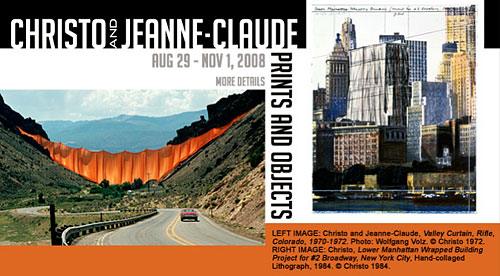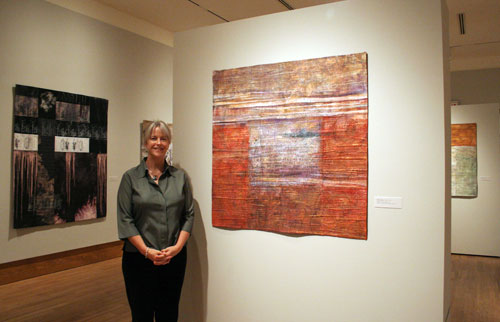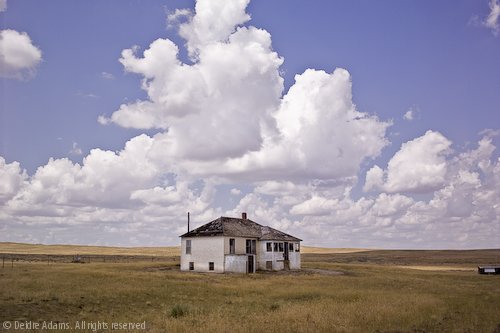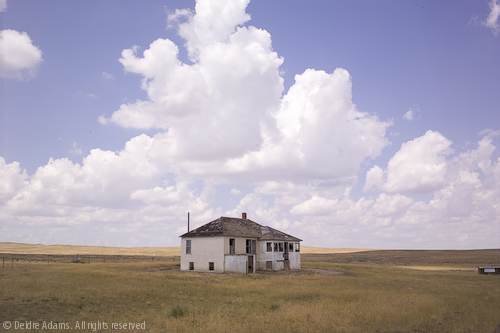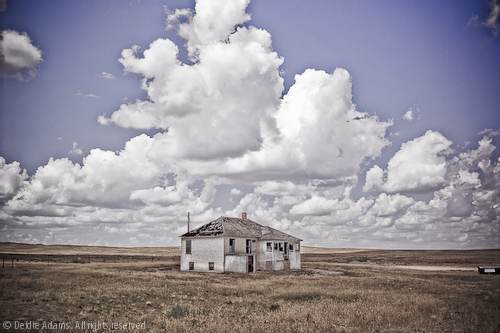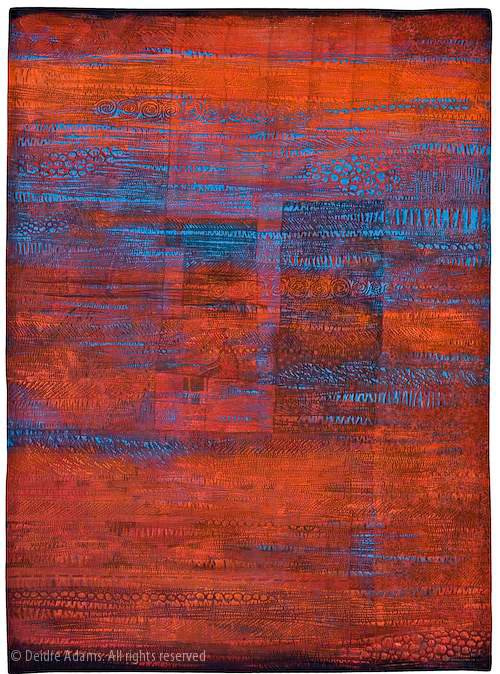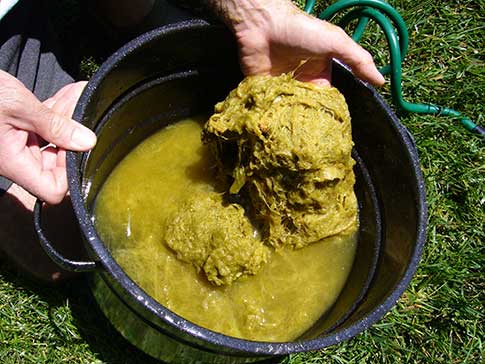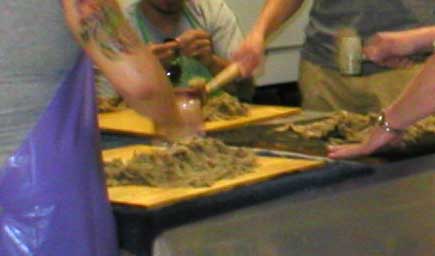Christo & Jeanne-Claude, 12 Voices opening
Last Thursday, I had the pleasure of attending a lecture by Christo and Jeanne-Claude, who were here in conjunction with their Prints and Objects exhibition currently on view at the Center for the Visual Arts in Denver. Christo and Jeanne-Claude are legendary for their environmental works done on a massive scale, the most recent of which was the Gates project in New York’s Central Park. I had also gone to the exhibition the day before as part of a class field trip, wondering beforehand what kind of things they did that could possibly be small enough to fit in this venue. It turns out that the items on exhibit are not standalone works of art, but they are preparatory sketches, limited-edition prints, and photographs all relating to their large-scale works.
The lecture consisted of a short screen presentation followed by a question-and-answer session. They showed images of several projects from the research stage, through drawings and sketches of the proposed project, and photos of meetings with local residents and officials in the vicinity of the proposed project. The scope of planning and logistics of these projects is simply mind-boggling. The time frame for a single project can span many years from initial concept to finished work. For example, the web page for The Gates lists the years as 1979-2005, a span of 26 years!
By far the most interesting part of the event was at the end when they took questions from the audience. Jeanne-Claude did most of the talking, and she stressed that everything they do is done from the heart, for the sheer joy and beauty that it gives them personally. The work is not done for others, but if others enjoy it, that’s a bonus. (Something many of us know intuitively that we should also strive for, but it’s often a struggle.)
12 Voices opening
12 Voices exhibition at the Dennos Museum Center
On Sept. 13, I attended the opening reception for 12 Voices, at the Dennos Museum Center in Traverse City, Michigan. The Museum Center is a beautiful venue, and the show was hung with good attention to flow and with plenty of room for each piece to be appreciated on its own as well as in context with its neighbors. Seven of the twelves artists were able to attend: Judith Content (the current SAQA president), Joan Schulze, Ginny Smith, Merle Axelrad Serlin, Kathy Weaver, and Teresa Barkley, and me. (I got to be roommates with Joan and Teresa, and getting to know them was a definite highlight of the trip. More on that later.)
Penny McMorris, the 12 Voices curator, gave a marvelous lecture on the artists and the work in the show. It was wonderful to hear the inside story on these artists (even though I knew a lot of it from working on the catalog) as well as Penny’s own interpretation on the work. I was fascinated to hear what she had to say about my own work, as it provided some insights that I hadn’t thought about but realized were absolutely true.
Nelson Armour, Kathy Weaver’s husband, took some great photos at the opening (thanks, Nelson!). Above is a photo he took of me next to my piece, Composition IV. To the left is Linda Colsh’s Cold Shoulder.
This is Teresa Barkley with me at the reception (photo also by Nelson Armour). The Dennos put on a great spread, with wonderful food and wine, before the lecture. All in all, it was a great trip. I spent a couple extra days there exploring the area; more on that later.

